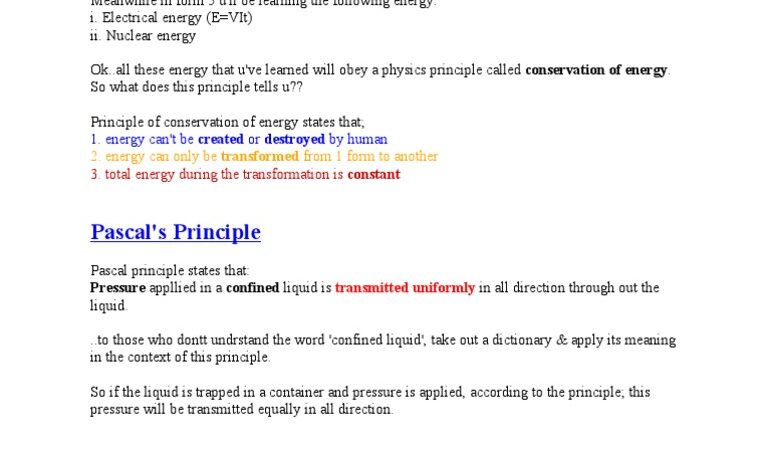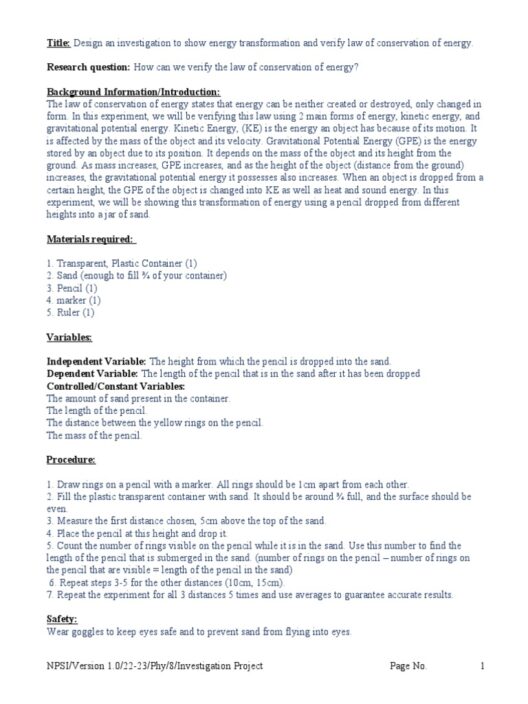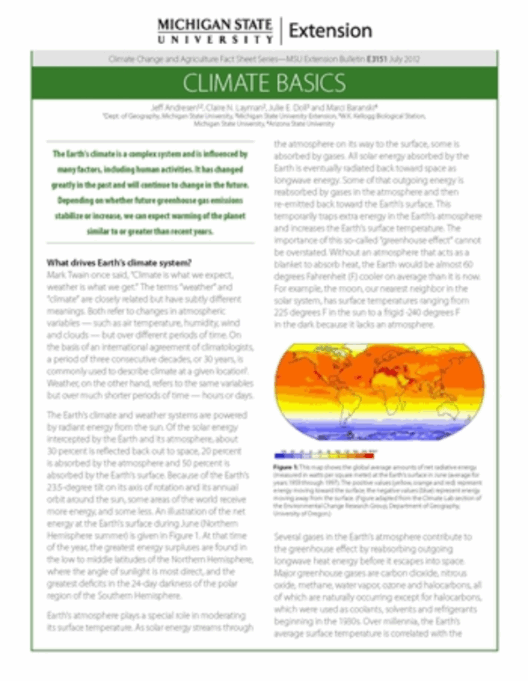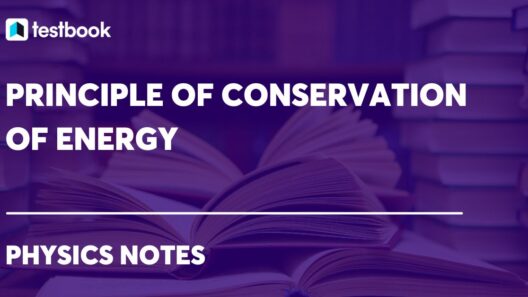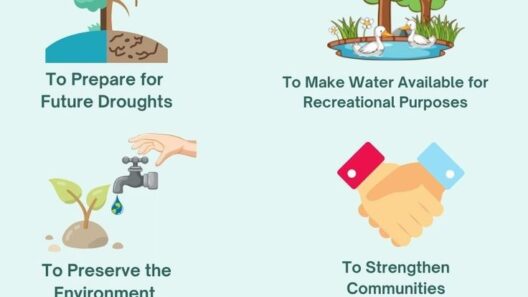Understanding the intricate dance of energy through the cosmos, the Laws of Conservation of Energy serve as foundational axioms that govern not only the physical sciences but also our approach to sustainability in an ever-evolving world. These laws articulate the principle that energy, in its various forms, is neither conceived nor extinguished but transformed and transferred. At the core of energy conservation lies a message that resonates deeply with both environmental stewardship and scientific curiosity.
Exploring these laws provides profound insight into the mechanisms that underpin our universe and highlights the aesthetic allure of nature’s efficiency in energy management.
Unraveling the First Law: Energy Cannot Be Created or Destroyed
The first law of thermodynamics, sometimes whimsically dubbed the “Law of Energy Conservation,” posits a cardinal truth: energy can neither be forged from nothing nor annihilated into oblivion. This implies that the total energy in an isolated system remains constant over time. Energy may transition from kinetic to potential forms, change from thermal to mechanical, or resonate as light, yet its totality remains immutable.
This principle has spectacular implications across various disciplines, extending from molecular biology to astrophysics. For instance, in the context of ecological systems, understanding how energy flows from sunlight through plants into herbivores and then into apex predators elucidates the symbiotic relationships that sustain life. On a more macroscopic level, this law challenges us to ponder our own energy consumption patterns and how they impact the globe. The beauty lies in recognizing that energy’s journey is a continuum—one where every transformation preserves the integrity of the total balance.
Delving Into the Second Law: Entropy and the Direction of Energy Transfer
The second law of thermodynamics introduces a fascinating dimension to our understanding of energy: entropy. Often interpreted as a measure of disorder or randomness, entropy governs the direction of energy transfer within any system. It suggests that energy systems naturally progress toward configurations of greater entropy, leading to what is commonly known as the ‘arrow of time.’
This raises intriguing questions about energy efficiency and waste. In practical terms, while energy transformations are inevitable, their efficiency can vary greatly. For example, a coal-fired power plant might transform coal into electricity with an efficiency of only 33%, resulting in significant waste in the form of heat and unburned materials. In contrast, renewable energy technologies, such as solar panels or wind turbines, embody designs that strive to minimize entropy production, championing the ideals of sustainability and resource conservation.
As energy flows through systems, the second law serves as a reminder of the vulnerabilities innate in our energy production processes. It invites us to seek innovative solutions that not only minimize energy waste but also catalyze transitions toward more sustainable practices in industrial and domestic contexts.
Exploring the Third Law: Absolute Zero and the Limits of Efficiency
The third law of thermodynamics ventures into the realm of the theoretically unattainable: absolute zero, a state in which molecular motion ceases entirely. This law posits that as a system approaches absolute zero, its entropy approaches a constant minimum. Though we can conjecture about its implications for energy conservation, portraying it as both a capstone and a frontier invites us to reflect on the limits of efficiency.
The fascinating aspect of the third law lies not merely in its intellectual challenge, but in its broader implications for the energy systems we cultivate. As we reach increasingly high efficiencies in energy use, we find a paradoxical trend—diminished returns on energy investments. Hence, pursuing technologies that inch closer to this theoretical frontier can yield transformative benefits across multiple domains, from quantum computing to energy storage solutions, giving rise to an innovative landscape that capitalizes on understanding thermal dynamics.
Practical Implications: Building a Sustainable Future
Understanding the laws of conservation of energy not only enriches our scientific literacy but also equips us with the wisdom to build a more sustainable future. These timeless principles can inform policy, guide technological innovation, and drive grassroots initiatives aimed at reducing our ecological footprint.
As individuals and collectives, the challenge lies in translating this scientific knowledge into actionable steps—whether it entails advocating for renewable energy policies, promoting energy-efficient technologies, or adopting behavioral changes that prioritize conservation practices in daily life.
Conclusion: The Unfolding Story of Energy
Ultimately, the three laws of conservation of energy encapsulate a profound narrative woven throughout the fabric of existence. They challenge us to observe and appreciate the delicate balance within natural systems while inspiring creativity and resilience in our approaches to energy management. The story of energy is an ever-unfolding odyssey—one that beckons us to appreciate its aesthetics, respect its limits, and commit to its responsible stewardship.



